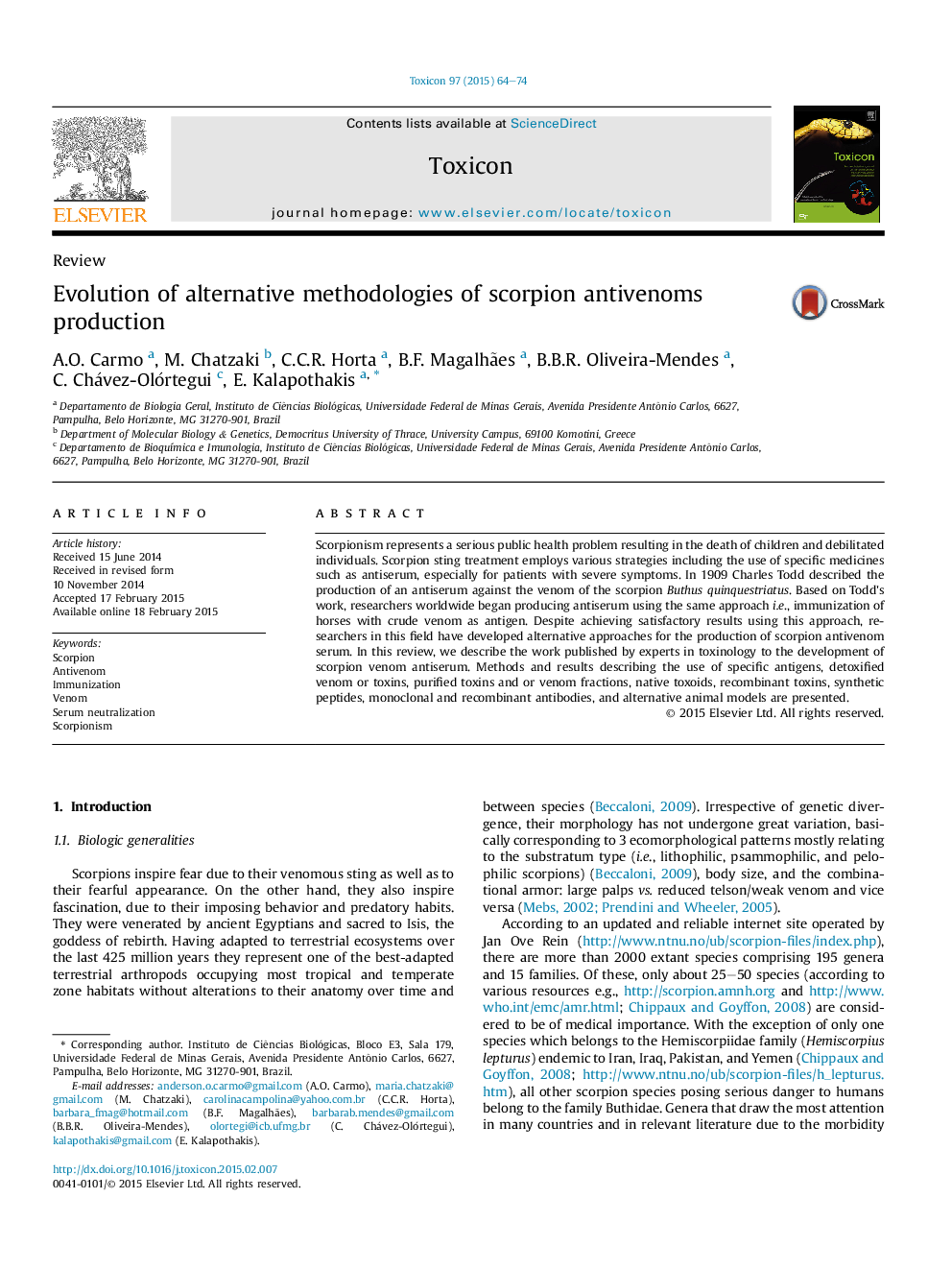| Article ID | Journal | Published Year | Pages | File Type |
|---|---|---|---|---|
| 2064589 | Toxicon | 2015 | 11 Pages |
•Scorpionism is a neglected public health issue especially in developing countries.•Treatment of scorpionism consists mainly in analgesics and serotherapy.•History and development of alternative methodologies to produce scorpion antivenom.•Alternative methods have sought to increase the safety of antivenom use.
Scorpionism represents a serious public health problem resulting in the death of children and debilitated individuals. Scorpion sting treatment employs various strategies including the use of specific medicines such as antiserum, especially for patients with severe symptoms. In 1909 Charles Todd described the production of an antiserum against the venom of the scorpion Buthus quinquestriatus. Based on Todd's work, researchers worldwide began producing antiserum using the same approach i.e., immunization of horses with crude venom as antigen. Despite achieving satisfactory results using this approach, researchers in this field have developed alternative approaches for the production of scorpion antivenom serum. In this review, we describe the work published by experts in toxinology to the development of scorpion venom antiserum. Methods and results describing the use of specific antigens, detoxified venom or toxins, purified toxins and or venom fractions, native toxoids, recombinant toxins, synthetic peptides, monoclonal and recombinant antibodies, and alternative animal models are presented.
